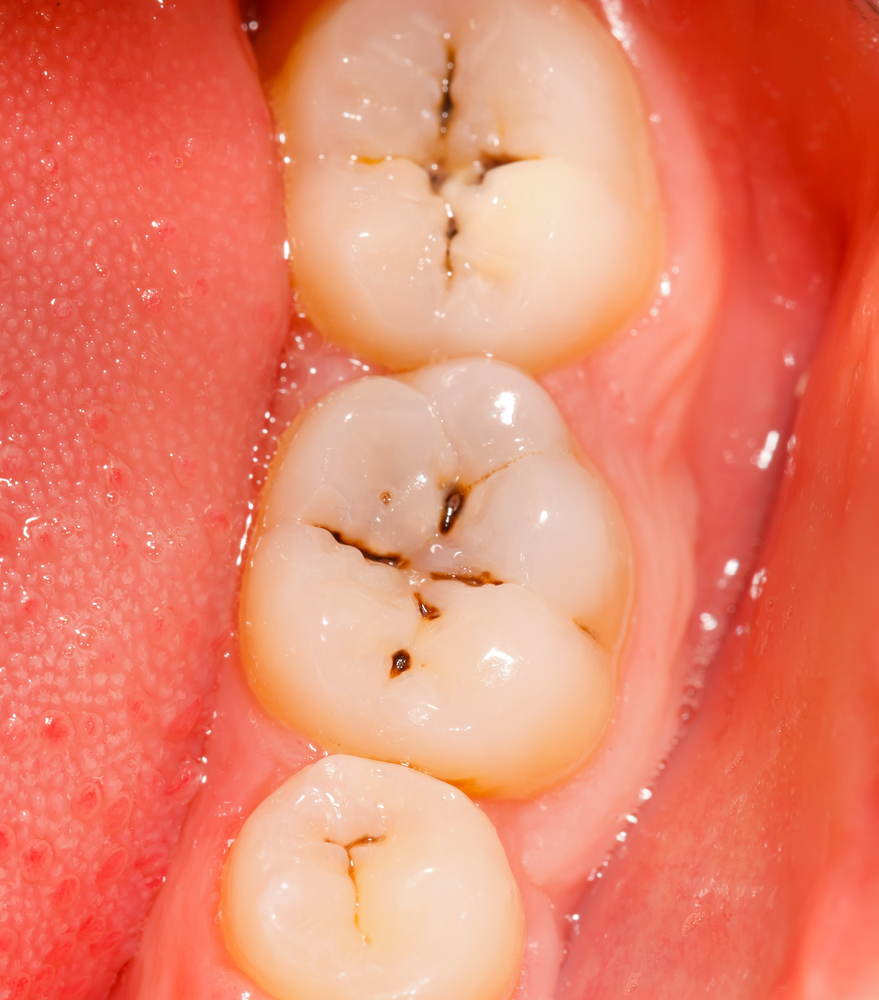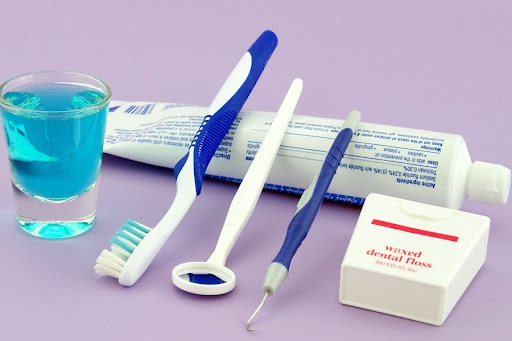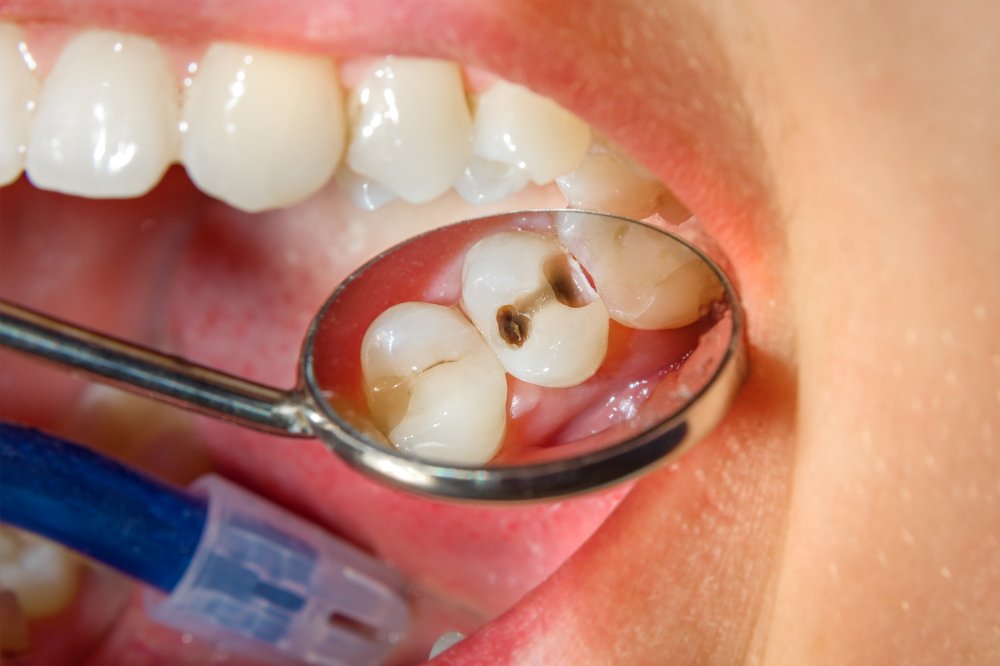Types of Dental Cavities and Their Causes: A Complete Guide to Tooth Decay

Dental cavities are one of the most common oral health problems affecting people of all ages. A cavity, or tooth decay, is the destruction of tooth enamel caused by acids produced by bacteria in the mouth. However, not all cavities are the same. Understanding the different types of dental cavities and their causes can help you prevent decay and maintain a healthy smile.
In this guide, we’ll cover the three main types of cavities—smooth surface cavities, pit and fissure cavities, and root cavities—and explore what causes them, as well as how to prevent them.
1. Pit and Fissure Cavities
Pit and fissure cavities are the most common type of cavities and tend to form in the grooves and depressions on the chewing surfaces of the back teeth (molars and premolars). These areas are particularly prone to decay because they are harder to clean, allowing food particles and plaque to accumulate.

Causes of Pit and Fissure Cavities:
- Poor Oral Hygiene: Inadequate brushing and flossing can allow plaque to build up in the pits and fissures of molars, leading to decay.
- Deep Grooves in Teeth: Some people naturally have deeper pits and grooves in their molars, making these areas more prone to decay.
- Diet High in Sugars and Carbohydrates: Frequent consumption of sugary or starchy foods provides fuel for bacteria in the mouth, leading to acid production and enamel breakdown.
Prevention Tips:
- Dental Sealants: Applying dental sealants to the molars can protect the pits and fissures from plaque buildup and decay.
- Thorough Brushing: Using a toothbrush with soft bristles and paying extra attention to the back teeth can help clean these vulnerable areas.
Discover more about dental sealants and their benefits in preventing pit and fissure cavities.
2. Smooth Surface Cavities
Smooth surface cavities develop on the flat, smooth surfaces of the teeth, typically on the sides and between the teeth. These cavities progress slowly compared to other types and are often easier to prevent with proper oral care.

Causes of Smooth Surface Cavities:
- Inadequate Brushing and Flossing: Failing to remove plaque from the smooth surfaces of teeth, especially between them, can lead to cavities.
- Diet Rich in Sugary and Acidic Foods: Frequent exposure to sugars and acids can erode the enamel, creating smooth surface cavities.
- Dry Mouth: A decrease in saliva flow, which helps wash away food particles and neutralize acids, can increase the risk of smooth surface cavities.
Prevention Tips:
- Regular Flossing: Flossing daily removes plaque and food debris from between the teeth, preventing cavities from forming on smooth surfaces.
- Fluoride Use: Fluoride toothpaste and fluoride treatments strengthen enamel and help protect against smooth surface cavities.
Internally link: Read more about how fluoride protects your teeth from cavities.
3. Root Cavities
Root cavities occur on the roots of the teeth, which are usually protected by gum tissue. However, as we age, the gums can recede, exposing the roots and making them vulnerable to decay. Root cavities are more common in older adults and those with gum disease.

Causes of Root Cavities:
- Gum Recession: As the gums recede, the tooth’s roots become exposed and vulnerable to decay.
- Dry Mouth (Xerostomia): A lack of saliva can lead to more plaque buildup on the tooth’s roots, increasing the risk of decay.
- Periodontal (Gum) Disease: Gum disease can lead to receding gums, making the roots of the teeth more susceptible to cavities.
Prevention Tips:
- Gum Health Maintenance: Brushing and flossing regularly can prevent gum disease and protect against gum recession.
- Regular Dental Cleanings: Professional cleanings can help prevent the buildup of plaque that leads to root cavities.
- Fluoride Treatment: Applying fluoride to the roots of the teeth can help strengthen them and prevent decay.
Internally link: Learn more about gum recession and how it affects your oral health.
What Causes Dental Cavities?
Dental cavities are caused by a combination of factors that contribute to the breakdown of tooth enamel. The primary cause is plaque, a sticky film of bacteria that forms on the teeth and produces acid when exposed to sugars from food and drinks.
Primary Causes of Cavities:
- Plaque Formation: Plaque forms constantly in your mouth. When you eat sugary or starchy foods, the bacteria in plaque produce acids that attack the enamel.
- Poor Oral Hygiene: If plaque is not removed through regular brushing and flossing, it hardens into tartar, which further erodes the tooth’s enamel.
- Frequent Snacking or Sipping: Constant snacking or sipping on sugary drinks provides a steady supply of sugars for bacteria, resulting in more acid production.
- Dry Mouth: A lack of saliva makes it harder to wash away food particles and neutralize acids, increasing the risk of decay.
- Acidic Foods and Beverages: Consuming acidic foods and drinks can wear down enamel over time, making it easier for cavities to form.
How to Prevent Cavities
Preventing cavities involves maintaining a good oral hygiene routine and making smart dietary choices. Here are some key steps you can take to protect your teeth:
1. Brush and Floss Regularly
Brushing twice a day with fluoride toothpaste and flossing daily removes plaque and helps prevent cavities from forming.
2. Use Fluoride Products
Fluoride strengthens enamel and makes it more resistant to the acids that cause tooth decay. Use fluoride toothpaste, drink fluoridated water, and ask your dentist about professional fluoride treatments.
3. Limit Sugary and Acidic Foods
Cutting back on sugary snacks, sodas, and acidic foods like citrus fruits can reduce the amount of acid that attacks your enamel.
4. Visit the Dentist Regularly
Routine dental checkups allow your dentist to detect early signs of cavities and provide preventive treatments like sealants or fluoride applications.
5. Drink Plenty of Water
Water helps wash away food particles and bacteria while keeping your mouth hydrated. It’s especially beneficial after eating to neutralize acids.
Internally link: Check out our full guide on preventing tooth decay with proper oral care.
Why Treating Cavities Early Is Important
Leaving cavities untreated can lead to more severe dental problems, including:
- Tooth Pain and Sensitivity: As the decay reaches deeper layers of the tooth, it can cause pain, especially when eating or drinking.
- Infection: If the cavity progresses to the inner part of the tooth (the pulp), it can cause a tooth infection, which may require a root canal or even tooth extraction.
- Tooth Loss: Advanced decay weakens the tooth structure, increasing the risk of tooth loss if not treated.
Early detection and treatment of cavities can prevent these complications and keep your smile healthy.
Internally link: Learn more about the importance of early cavity treatment and how to avoid tooth loss.
Conclusion
Dental cavities come in various forms—pit and fissure cavities, smooth surface cavities, and root cavities—each with its unique causes and risks. By understanding these different types of cavities and maintaining a consistent oral care routine, you can prevent decay and preserve the health of your teeth. From regular brushing and flossing to fluoride treatments and dental sealants, there are many ways to protect your teeth from cavities and maintain a bright, healthy smile.
If you suspect you have a cavity or are due for a dental checkup, don’t wait. Schedule an appointment with your dentist to ensure your teeth stay in top condition.
Related Posts You Might Like:
- How Fluoride Protects Your Teeth from Cavities
- Understanding Tooth Decay: Causes, Symptoms, and Treatment
- Tips for Maintaining a Cavity-Free Smile










0 Comments on “Types of Dental Cavities and Their Causes: A Complete Guide to Tooth Decay”